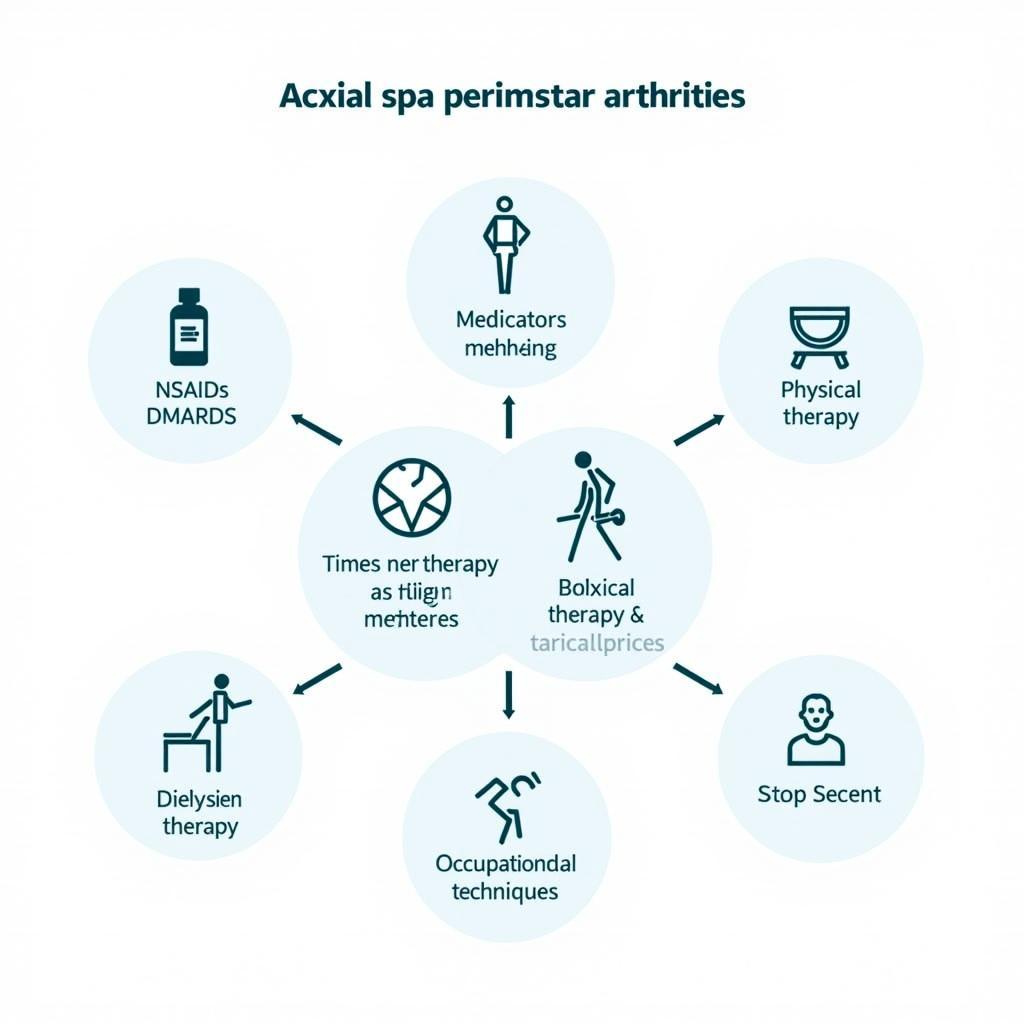Axial Spa Peripheral Arthritis encompasses a spectrum of inflammatory conditions affecting both the spine (axial) and peripheral joints. This means you might experience stiffness and pain in areas like your back, neck, and also in your hands, feet, and other joints. Understanding the nuances of this condition can empower you to manage your symptoms effectively and improve your overall quality of life.
What is Axial Spa Peripheral Arthritis?
Axial spa peripheral arthritis describes a group of conditions where inflammation affects both the spine and the joints of the limbs. It often presents with symptoms like morning stiffness, pain, and limited mobility. Early diagnosis and proper management are crucial for minimizing long-term impact. The term “spa” in this context is likely a typo and refers to “spA” which stands for spondyloarthritis. This umbrella term covers several related conditions, including ankylosing spondylitis and psoriatic arthritis. Differentiating between these specific diagnoses requires a comprehensive evaluation by a rheumatologist.
Symptoms and Diagnosis of Axial SpA Peripheral Arthritis
The symptoms of axial spa peripheral arthritis can vary significantly from person to person. Some common signs include:
- Back pain and stiffness: Often worse in the morning or after periods of inactivity.
- Peripheral joint pain: Affecting joints like the knees, ankles, wrists, and hands.
- Fatigue: A persistent feeling of tiredness.
- Inflammation in other areas: Such as the eyes (uveitis) or the entheses (enthesitis).
Diagnosis involves a combination of physical examination, imaging studies (like X-rays and MRI), and blood tests. Your doctor will look for signs of inflammation, joint damage, and specific genetic markers that are associated with spondyloarthritis.
Treatment Options for Axial SpA Peripheral Arthritis
Managing axial spa peripheral arthritis focuses on reducing pain, improving mobility, and preventing further joint damage. Treatment plans are individualized and may involve:
- Medications: Nonsteroidal anti-inflammatory drugs (NSAIDs), disease-modifying antirheumatic drugs (DMARDs), and biologics.
- Physical therapy: Exercises to improve flexibility, strength, and posture.
- Occupational therapy: Strategies to adapt daily activities and reduce strain on joints.
- Lifestyle modifications: Maintaining a healthy weight, regular exercise, and a balanced diet.
 Axial SpA Peripheral Arthritis Treatment Options Chart
Axial SpA Peripheral Arthritis Treatment Options Chart
Living with Axial SpA Peripheral Arthritis: Tips for Managing Your Condition
Living with a chronic condition like axial spa peripheral arthritis can be challenging, but it doesn’t have to define you. Here are some practical tips:
- Stay active: Regular, low-impact exercise is crucial for maintaining joint mobility.
- Listen to your body: Rest when needed and avoid activities that exacerbate your pain.
- Connect with others: Support groups and online communities can provide valuable emotional and practical support.
- Prioritize self-care: Engage in activities that promote relaxation and reduce stress, like meditation or yoga.
“Managing axial spA effectively requires a multifaceted approach that addresses both physical and emotional well-being,” says Dr. Emily Carter, a leading rheumatologist specializing in spondyloarthritis. “By actively participating in your treatment plan and incorporating healthy lifestyle habits, you can significantly improve your quality of life.”
 Axial SpA Peripheral Arthritis Lifestyle Management Visual
Axial SpA Peripheral Arthritis Lifestyle Management Visual
Conclusion
Axial spa peripheral arthritis is a complex condition requiring a comprehensive and personalized approach to management. By understanding the symptoms, diagnosis, and treatment options, and by actively engaging in self-care practices, you can effectively navigate this condition and maintain a fulfilling lifestyle. Early intervention and consistent management are key to long-term well-being.
FAQ
- What is the difference between axial and peripheral spondyloarthritis?
- Is axial spa peripheral arthritis hereditary?
- What are the long-term complications of axial spa peripheral arthritis?
- What can I do to manage flares?
- How often should I see my rheumatologist?
- Can diet impact axial spa peripheral arthritis symptoms?
- Are there any alternative therapies that might be helpful?
Contact Us
For support, please contact us at Phone: 0373298888, Email: [email protected], or visit us at 86 Cầu Giấy, Hanoi. Our customer service team is available 24/7.